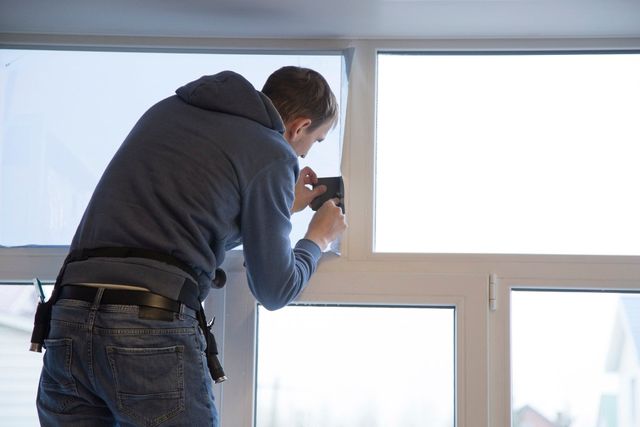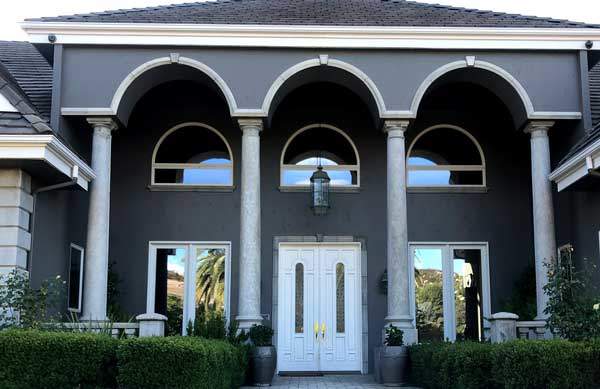Residential Window Tint: An Overview to Choosing the Right Shade
Residential Window Tint: An Overview to Choosing the Right Shade
Blog Article
How Residential Home Window Tinting Enhances Your Home's Energy Efficiency
Residential home window tinting provides an engaging option for property owners looking for to boost power effectiveness within their living areas. By using specialized films to windows, it successfully decreases warmth transfer, thus stabilizing indoor temperature levels and decreasing the requirement for extreme home heating or cooling.
Recognizing Home Window Tinting
Comprehending window tinting is crucial for property owners seeking to enhance both convenience and energy efficiency in their home. Residential Window Tint. Window tinting entails the application of a thin movie to the inside or outside surface of glass windows. This film can considerably regulate the quantity of sunshine and warmth that gets in a home, thus influencing indoor climate conditions
There are various types of home window tinting films available, each with unique homes. The performance of window tinting is often determined by its Visible Light Transmission (VLT) percentage, which shows exactly how much light can pass through the movie.
Benefits of Power Effectiveness
Window tinting not only boosts aesthetics yet likewise plays a significant function in improving power performance within property spaces. By minimizing heat transfer with home windows, tinted movies create an extra stable indoor environment, which can result in substantial reductions in power intake for heating & cooling. This energy performance equates right into lower utility costs, providing house owners with significant long-term cost savings.

Furthermore, window tinting boosts the comfort of living spaces. By minimizing glow and blocking harmful UV rays, colored windows create an even more enjoyable environment, which can bring about boosted wellness for occupants. The defense versus UV rays also aids maintain furniture and floor covering from fading, adding to the durability of home items.
How Tinting Works
Tinting movies run with a combination of innovative materials and modern technologies made to manage the amount of solar power going into a home. Mostly made up of polyester, these movies frequently integrate metallic or ceramic bits that take in and show warmth. This double capacity allows them to dramatically minimize the infiltration of ultraviolet (UV) rays and infrared radiation while permitting noticeable light to pass through.
The effectiveness of home window tinting is gauged by its solar warm gain coefficient (SHGC), which shows just how much solar power is transferred through the window. Reduced SHGC values are preferable as they signify higher warm being rejected. Furthermore, window colors can feature a range of shades, permitting homeowners to customize their aesthetic choices while improving energy performance.
Moreover, these movies serve as an obstacle, avoiding heat loss during chillier months by mirroring like this indoor heat back into the home. This thermal insulation impact enhances the cooling advantages gained throughout warmer months, adding to a well balanced indoor climate year-round. By handling solar energy efficiently, household home window tinting not just improves convenience but also plays an essential duty in minimizing power consumption and reducing utility expenses.
Choosing the Right Color

There are different kinds of window movies readily available, including colored, metalized, and ceramic. Ceramic films give exceptional warm control without compromising exposure and are highly sturdy, making them a prominent choice.
Visible light transmission (VLT) is one more essential element, as it shows the amount of all-natural light that can travel through the tinted glass. Homeowners must choose a color with a VLT that matches their illumination preferences while still supplying ample glow reduction.
Additionally, evaluating the solar heat gain coefficient (SHGC) can assist establish just how well a tint can obstruct warm from sunshine. A reduced SHGC indicates far better heat control, ultimately boosting energy efficiency.
Installment and Maintenance Tips
Proper setup and upkeep are essential parts in making best use of the benefits of residential window tinting. To attain optimum outcomes, it is a good idea to employ a qualified professional for setup. This makes sure that the color is used properly, staying clear of air bubbles, wrinkles, or misalignment that can compromise performance. Experts likewise use specialized techniques and devices, which can go right here improve the resilience and efficiency of the color.
Following installment, upkeep is vital to extend the life of the home window film. It is suggested to wait at least 30 days before cleaning the tinted home windows to permit the sticky to treat totally.
Addressing these concerns immediately can protect against further damage and maintain power efficiency. By adhering to these installation and maintenance pointers, home owners can guarantee their window tinting continues to give substantial energy savings and convenience for years to come.
Verdict
To conclude, property window tinting works as an efficient service for boosting power efficiency within homes. By lowering warm transfer and blocking harmful UV rays, home window films add to reduce power usage and improved interior comfort. The option of proper tinting materials, in addition to proper installment and maintenance, better makes the most of these benefits. Eventually, home window tinting represents a lasting investment that not just lowers energy bills however also promotes a comfy living environment throughout the year.
Home window tinting includes the application of a thin movie to the inside or exterior surface area of glass home windows. By reducing warmth transfer through windows, colored films produce an extra steady interior climate, which can lead to considerable decreases in power intake for heating and cooling.The effectiveness of home window tinting is determined by its solar warmth gain coefficient (SHGC), which shows how much solar energy is sent with the window. By handling solar energy efficiently, property window tinting not only improves comfort but likewise plays an essential role in minimizing power usage and lowering utility expenses.
By lowering warm transfer and obstructing hazardous UV rays, home window movies add to lower power intake and improved indoor convenience.
Report this page